Iron ore is the primary raw material for steel production and one of the most essential minerals in the global economy. As the demand for high-grade iron ore increases, efficient processing methods become crucial.
This guide explores the key steps in iron ore processing, from extraction to pelletizing, and highlights the essential equipment used at each stage.
Why process iron ore?
Iron ore is a fundamental material in modern industries, with about 98% used for iron and steel production in construction, infrastructure, and machinery. Iron concentrate is also used to produce iron oxide pigments, magnetic materials, and water treatment agents in chemical, energy, and electronic industries.
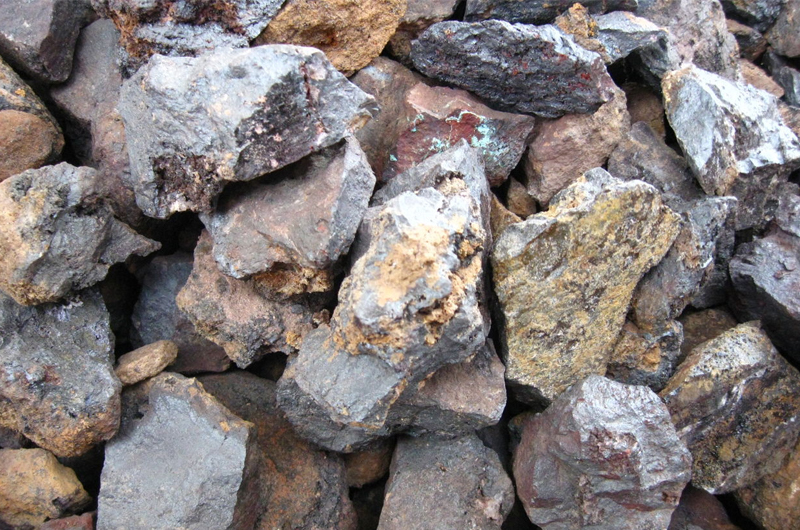
The most economically valuable types of iron ore include:
| Iron ore type | Iron content |
| Magnetite(Fe₃O₄) | ~72% |
| Hematite(Fe₂O₃) | ~69.9% |
| Limonite(FeO(OH)·nH₂O) | 40%–60% |
| Siderite(FeCO₃) | ~48% |
The primary goal of processing iron ore is to increase its iron content and remove impurities. This improves efficiency in smelting, reduces energy consumption, and minimizes environmental impact.
How is iron ore processed? (Recommended equipment)
After being extracted from open-pit or underground mines, iron ore undergoes several processing steps in an ore plant to meet steel production requirements.
Different types of iron ore (hematite, magnetite, limonite, and siderite) require specific processing methods due to their unique mineral compositions and properties.
The five key steps in iron ore processing include: (1) crushing and grinding, (2) beneficiation (ore separation), (3) pelletizing or sintering, (4) smelting and refining, and (5) casting, rolling, and post-processing.
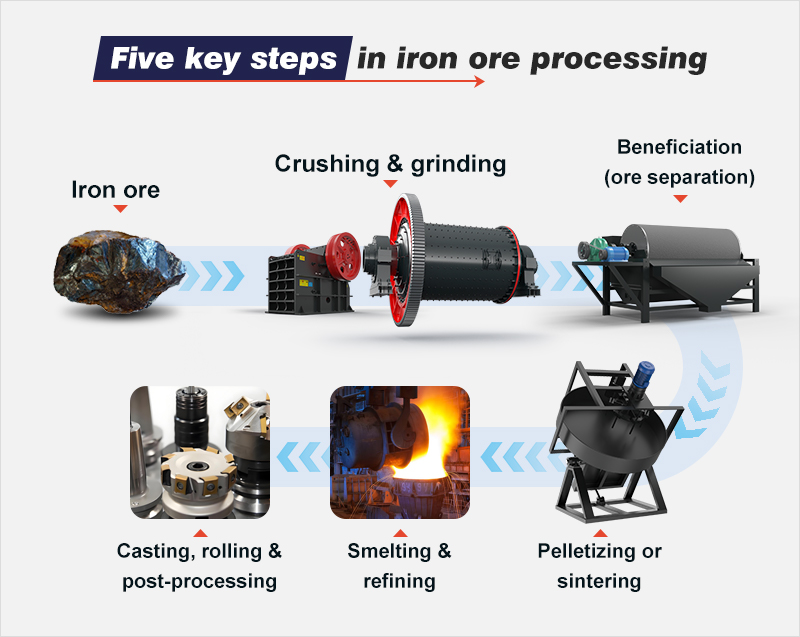
Step 1: Crushing & grinding
Crushing and grinding are the first steps in iron ore processing. The main goal is to break iron ore into smaller sizes.
Generally, the crushing process is divided into three stages: primary crushing, secondary crushing, and fine crushing. The grinding stage further reduces the ore to fine particles, improving iron recovery rates.
What equipment is used in the crushing stage?
The jaw crusher is mainly used for primary crushing of iron ore. It can handle large iron ore chunks with a maximum feed size of 1200 mm.
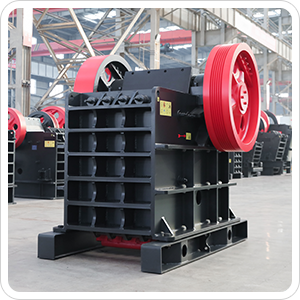
High capacity: Processes 5 t/h–1500 t/h per unit.
Large reduction ratio: Achieves up to 6:1 reduction; adjustable output size (10 mm–350 mm).
Durable & wear-resistant: Jaw plates made of high-manganese steel, alloy steel, or composite materials for extended lifespan.
After initial crushing, the cone crusher is used for secondary and fine crushing of iron ore. It is ideal for handling hard iron ore in the secondary crushing stage.
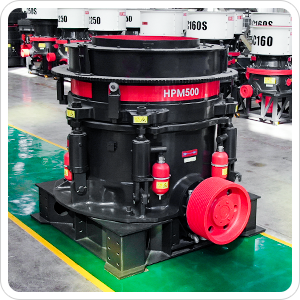
Layered crushing: Reduces flaky particles and makes the output size more uniform.
Smart control: Quickly changes the discharge size, boosting efficiency by 15%–25%.
Hydraulic system: Equipped with dual hydraulic and lubrication protection, preventing overload and minimizing downtime.
In addition to cone crushers, impact crushers are also used for secondary crushing of iron ore. However, they are more suitable for softer to medium-hard iron ore.
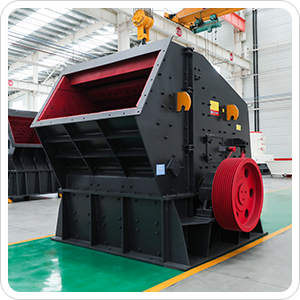
Cost-effective: Achieves one-step crushing, reducing grinding costs.
High-quality components: Equipped with high-chromium alloy hammers for enhanced wear resistance.
Sealed design: Reduces dust and noise, ensuring a safer and more eco-friendly operation.
What equipment is used in the grinding stage? Contact our sales manager
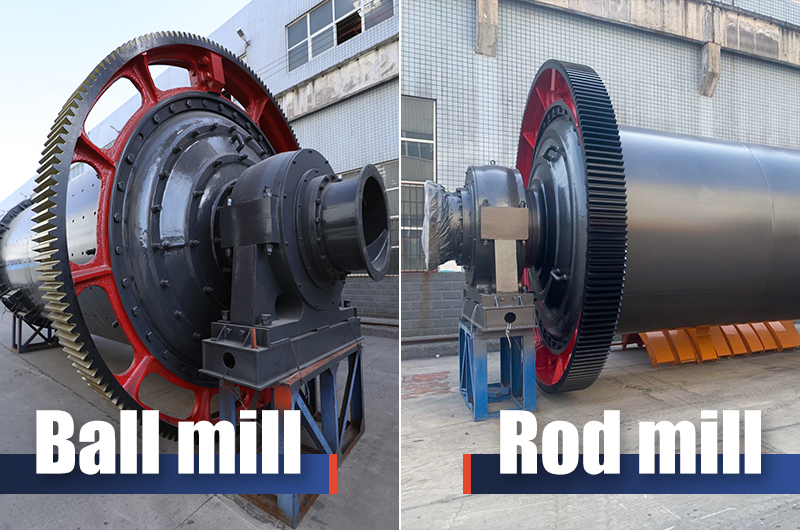
The ball mill is the most common grinding equipment for iron ore. It grinds ore into micron-sized particles (as fine as 0.074 mm) through the impact and grinding action of steel balls.
FTM Machinery's ball mill is designed for large-scale iron ore grinding, with a capacity of up to 208 tons per hour. It supports both dry and wet grinding processes.
Another common grinding machine is the rod mill, which is best for coarse grinding. Compared to the ball mill, it reduces over-grinding and gives a more even particle size.
Step 2: Beneficiation (ore separation)
Beneficiation is the core process in iron ore processing. The goal is to separate iron minerals from gangue and increase the ore grade. Different types of iron ore require different beneficiation methods, including magnetic separation, flotation, and gravity separation.
Magnetic separation (for Magnetite)
Magnetic separation separates iron ore based on magnetic differences. It is mainly used for magnetite and other magnetic iron ores.
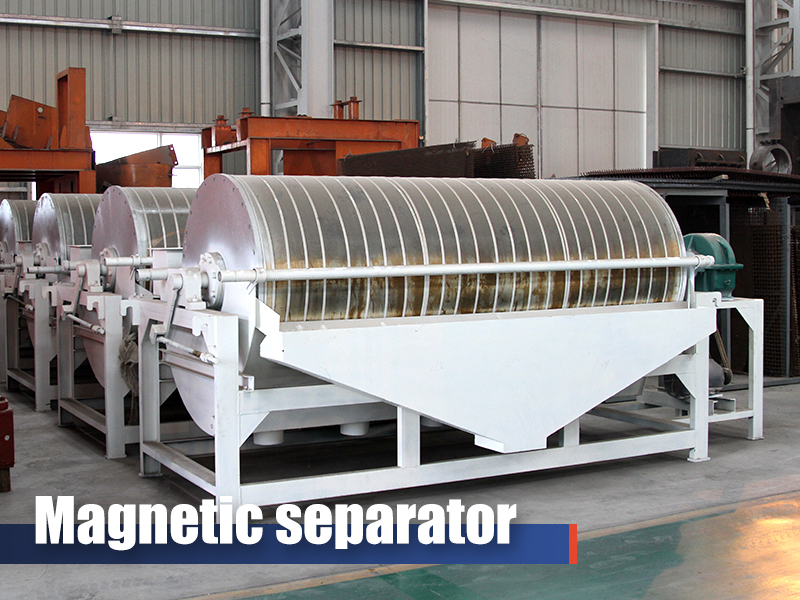
FTM Machinery's magnetic separator can process up to 280 tons per hour, handling ore particles up to 3 mm. It efficiently separates iron-rich material from waste, making it ideal for large-scale production.
Flotation separation (for Hematite and Siderite)
Flotation separation uses chemical reagents to make iron minerals float and separate them from impurities. It is suitable for non-magnetic iron ores like hematite and siderite.
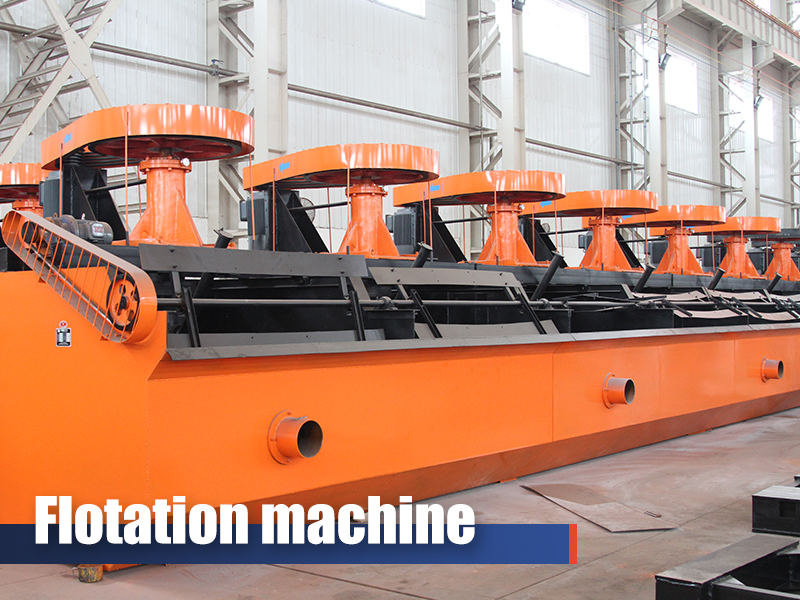
FTM Machinery's flotation machine has a processing capacity of 20 m³ per minute. It effectively removes silica and phosphorus from low-grade ores and is best for complex iron ore beneficiation. However, it is not suitable for particles smaller than 0.01 mm.
Gravity separation (for Hematite and Limonite)
Gravity separation relies on density differences between iron ore and gangue. It is best for coarse iron ore.
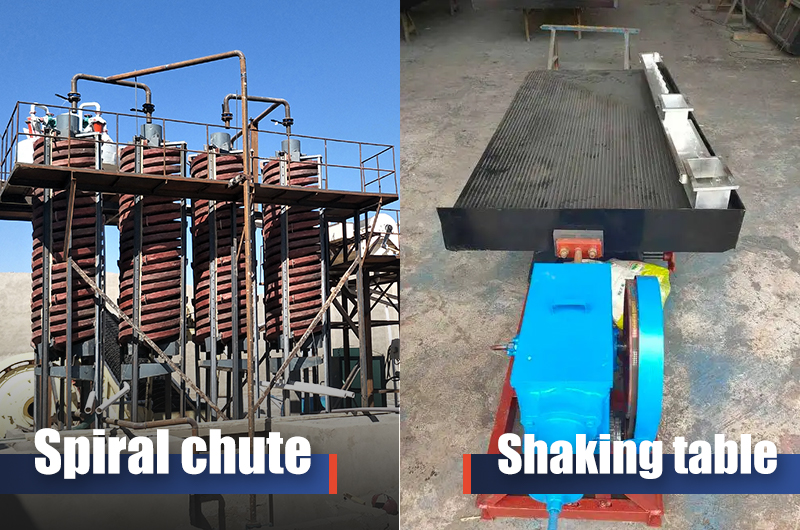
- Spiral chute: Best for fine iron ore (0.3 mm–0.02 mm), highly efficient.
- Shaking table: Used for final refining, effective for iron ore particles ranging from 2 mm to 0.074 mm, with a separation efficiency of over 90%.
- Jig separator: Suitable for medium to coarse iron ore, with a capacity of 5–50 tons per hour. It is energy-efficient and ideal for enriching low-grade iron ore.
After beneficiation, iron concentrate is further processed using a thickener to remove excess water, increasing iron content for smelting.
The following outlines the main methods and equipment used for iron ore beneficiation. The table below summarizes typical processing methods for different types of iron ore:
| Ore type | Beneficiation method | Main equipment |
| Magnetite | Magnetic separation | Jaw crusher, ball mill, wet magnetic separator |
| Hematite | Flotation/Gravity separation | Jaw crusher, jig separator, flotation machine |
| Limonite | Roasting magnetic separation/gravity separation | Rotary kiln, wet magnetic separator, spiral chute |
| Siderite | Roasting magnetic separation/flotation | Rotary kiln, wet magnetic separator, flotation machine |
Step 3: Pelletizing & sintering
After ore dressing, iron concentrate is processed through pelletizing or sintering for blast furnace ironmaking. Different types of iron concentrate have varying properties, determining their use.
- Magnetite and hematite concentrates are fine and iron-rich, suitable for pelletizing or sintering.
- Limonite and siderite concentrates have high moisture and impurities, making them unsuitable for direct pelletizing and requiring sintering to improve smelting performance.
Sintering mixes iron ore powder, return fines, and fluxes (like limestone, coke powder) and sinters at high temperatures to form strong sinter for blast furnaces.
Pelletizing uses a disc pelletizer to mix iron ore powder with binders (like bentonite and quicklime) to form uniform pellets, ideal for fine concentrates.
The disc pelletizer is key for pelletizing iron concentrate, using a rotating disc and adjustable spraying system to mix the powder and binder into pellets, which are then roasted in a rotary kiln before use.Contact our sales manager
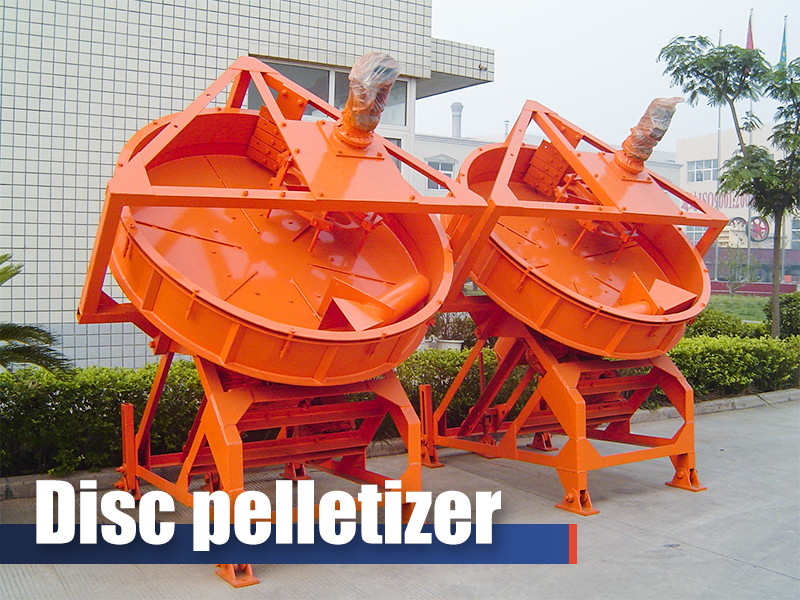
Advantages of FTM Machinery's disc pelletizer:
- Uniform pelletizing: Pellet size is controllable (3 mm–16 mm), with a pelletizing rate of over 95%.
- Flexible operation: The angle of the disc is adjustable (35°–55°), suitable for different ore powders and process requirements.
- Energy-efficient and eco-friendly: It consumes less energy and reduces dust emissions by 30% compared to rotary drum pelletizers.
Step 4: Smelting and refining (ironmaking and steelmaking)
Once iron ore is processed into sinter or pellets, it can be used for ironmaking and steelmaking.
Smelting (ironmaking)
- Blast furnace (BF) process: Sinter and pellets are mixed with coke in the blast furnace to produce pig iron through a reduction reaction. The slag can be used in cement and road construction.
- Direct reduced iron (DRI) process: Natural gas or hydrogen reduces ore at low-to-medium temperatures to produce sponge iron.
After ironmaking, the product still contains impurities and needs further refining to produce steel.
Refining (steelmaking)
- Basic oxygen furnace (BOF): Oxygen is blown through pig iron to remove impurities and convert it into molten steel.
- Electric arc furnace (EAF): Suitable for DRI or scrap steel, where electricity is used to melt the materials into molten steel.
Step 5: Casting, rolling & post-processing
After refining, molten steel is cast into billets, then hot or cold rolled into final products like plates, rebar, or pipes. Further processes like heat treatment, galvanizing, or coating may be used to enhance strength, corrosion resistance, and applicability.
Conclusion
Iron ore processing includes crushing, grinding, beneficiation, pelletizing, and more, all impacting product quality and production efficiency. FTM Machinery focuses on providing efficient and reliable equipment solutions for this industry.
Our expert team can recommend suitable crushers, ball mills, and other equipment based on your needs, providing technical support throughout the processing stages to boost efficiency. Contact us now

